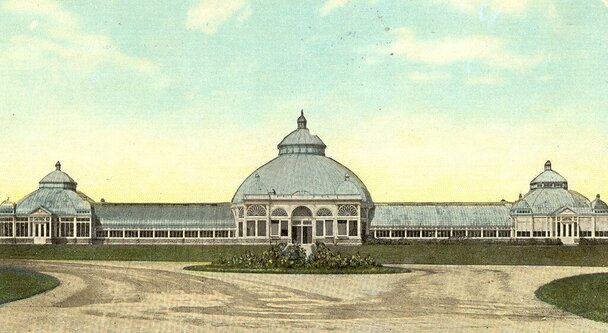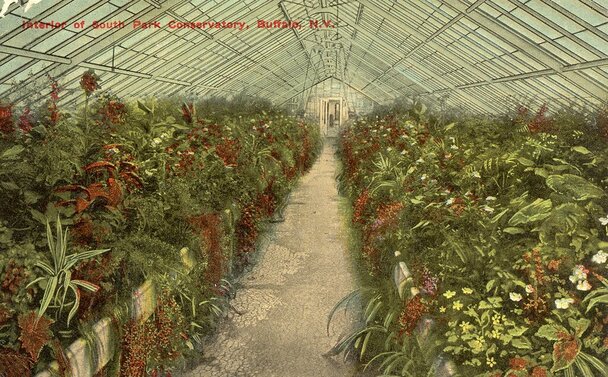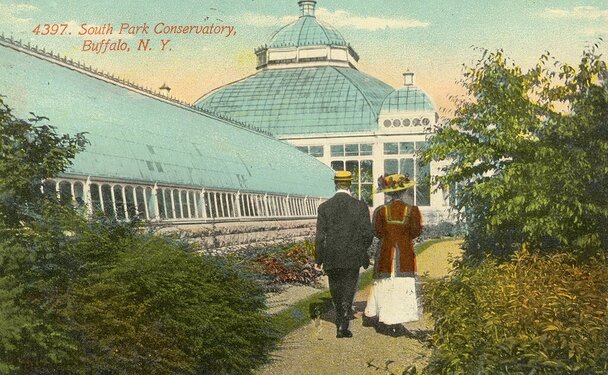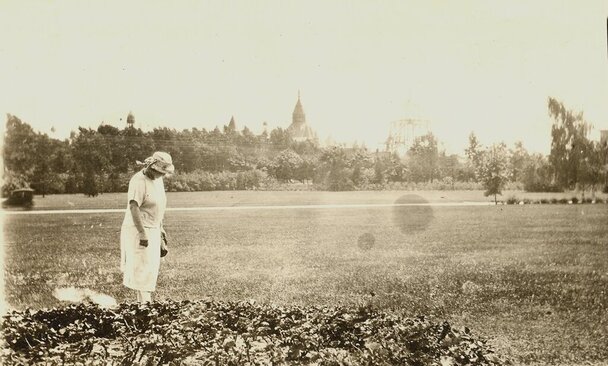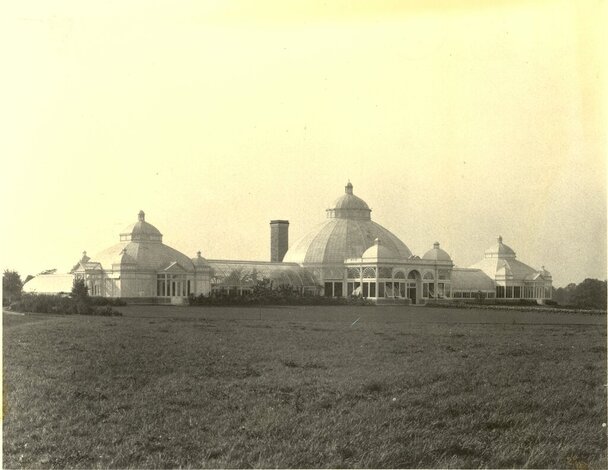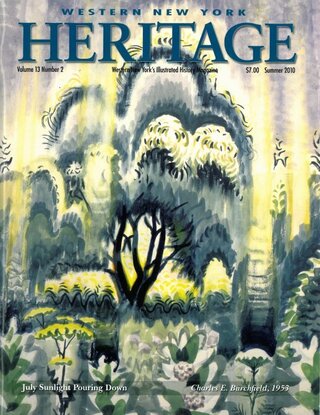Though
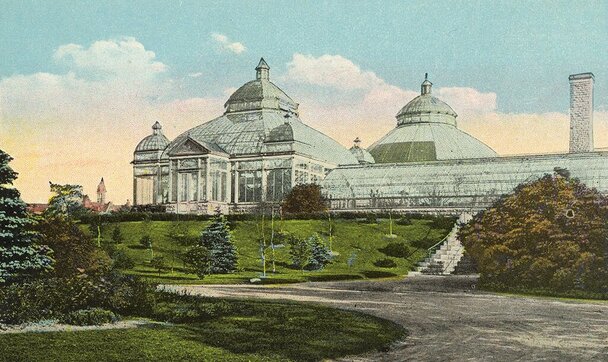
A view of the northern elevation of the conservatory, from a postcard, ca. 1910.
Bill Koch Collection
The
The conservatory building in
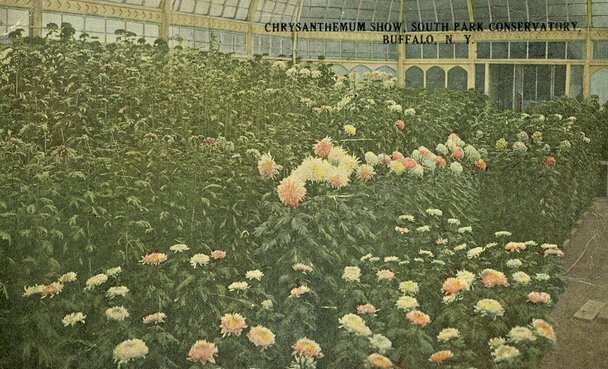
This interior view of the conservatory illustrates a display of Chrysanthemums, ca. 1910.
Buffalo and
The first director of the Botanical Gardens, Professor John F. Cowell, saw to it that the building would be filled with a world-class variety of plants. Traveling the globe to obtain unique species, Cowell’s work gained national attention for the conservatory. During the Pan-American Exposition in 1901, throngs of visitors traveled south by trolley to view the exotic varieties of plant life on display at the conservatory and gardens.
Throughout the 20th century, the conservatory and adjacent gardens went through cycles of upturn and decline. In 1981, when city budget shortages and the deterioration of the structure threatened its closure, the ownership and operation of the Botanical Gardens was taken over by Erie County, supported by the newly formed Buffalo and Erie County Botanical Gardens Society. The not-for-profit Society subsequently assumed responsibility for the day-to-day operation of the Gardens in August 2004, under a 25-year agreement with Erie County.
More recently, the Society has developed a master plan to revitalize the Botanical Gardens and its conservatory. This historic structure is one of less than a dozen large Victorian conservatories in the
The future of this important cultural revitalization project could be in jeopardy, however. While the Botanical Gardens were the recipient of operating funds from Erie County for the first five years of their operating agreement, the County Executive has failed to release any funding for the current year, despite an appropriation for such funding in the 2010 County budget. Needless to say, the withholding of funding has been a major setback for the Society and the Botanical Gardens. With luck, right minds will prevail, and the revitalization of this cultural treasure will be allowed to continue.
To learn more about the Botanical Gardens and how to get involved, visit their website at www.buffalogardens.com. In the meantime, sit back and enjoy this array of photographs from the early 20th century.
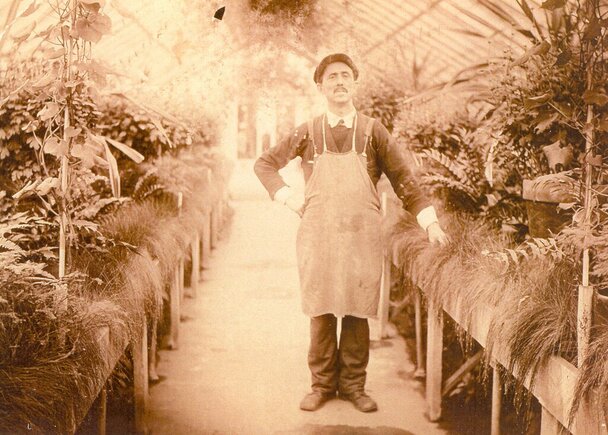
Chief Gardener Bott tends to the conservatory’s “residents” in these interior views, ca. 1910.
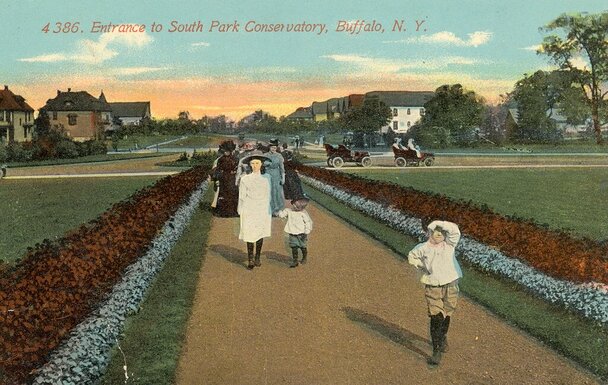
Moving outdoors, visitors young and old enjoy a stroll among the array of colorful gardens adjacent to the conservatory, ca. 1910.
Bill Koch Collection
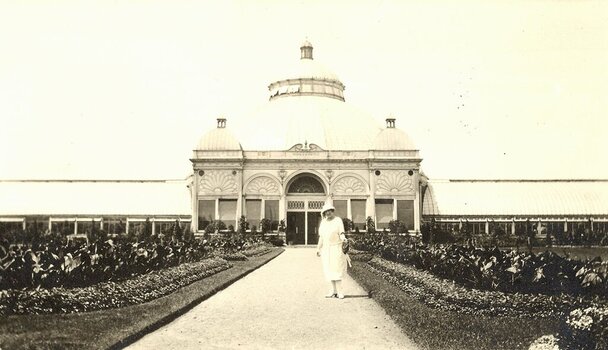
During the summer of 1922, a female visitor posed for her photo at a variety of locations around the Botanical Gardens. Our Lady of Victory Basilica is under construction in the background of the upper image.
Buffalo and
